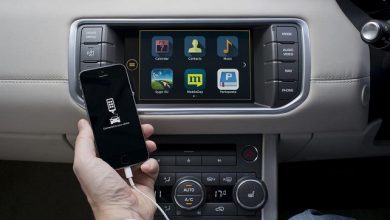The Flexibility of Connectivity with eSIM in Telematics

Telematics as per Wikipedia is an interdisciplinary field encompassing telecommunications, road transport technologies (road transport, road safety, etc.), electrical engineering (sensors, instrumentation, wireless communications, etc.), and computer science (multimedia, Internet, etc.). Telematics can involve any of the following:
- The technology of sending, receiving, and storing information using telecommunication devices to control remote objects
- The integrated use of telecommunications and informatics for application in vehicles and to control vehicles on the move
- (Most narrowly) The use of such systems within road vehicles (also called vehicle telematics)
There was the time when Indian telematic market was very fragmented and there was no mechanism and no specification to regularise or standardised the products of telematics in the market. To address the concern Automotive Research Association of India (ARAI) introduced the specification for the Indian telematic industry. As a start the focus was on commercial vehicles to enhance the safety and security of the end users/passengers.
The release of the AIS140 specifications brought a paradigm shift in the industry to standardised all telematic devices to have common functionality across various manufactures. With the roll out of the specifications the concept of the connected vehicles started prevailing in the Indian automotive industry where the telematic box is able to capture, communicate the relevant data to the respective systems for better functioning, safety, security of the vehicle and the users.
Connected cars has always been one of the major contributor of the large IoT market and has set a bench mark for the other industry use cases where the ability of M2M segment is getting reflected in the operational effectiveness. There are many ways by which telematics can benefit to the world of connected vehicle:
- Service and predictive maintenance: which is accessing the vehicle health statics and data. Predictive maintenance is utmost importance for smooth running of the vehicle.
- Productivity: Various parameters can be defied to track driving time, fuel utilization etc.
- Safety: Driving behaviour like speeding, cornering, hard braking etc are basic parameters to consider for safety.
- Navigation: Providing maps and turn by turn assistance.
- Remote Security: A mechanism to provide and manage remote locking and unlocking of vehicle in adverse case of theft.
There are two segments we all are talking about when it comes to connectivity, one is consumer electronics segment and the next big segment we all talk about is Internet of Thing’s i.e. primarily connecting all devices to create a way to talk and communicate with each other. There are various industries which can utilize and leverage Internet of Things for their industry specific use cases example transportation. When talking about transportation, we all know how dependent we are on transport services in our day to day lives.
The primary concept is to have an ability of identifying any irregularities much ahead of human ability to detect and notify to the right entity at right time. One of the components of ‘IoT’ in automotive is vehicle telematics which is real and evolving very fast and bringing the real information at real time. Telematics devices are aiming in not only helping in vehicle tracking but also to enterprises to capture, study data and plan strategies.
Telematics devices from a technology point would then require two technical aspects, one is Global Positioning Satellite (GPS) to track vehicle position, status and also a big way to provide a peace of mind to owners as well as fleet and logistic service providers. Second key aspect is in term of mobility connectivity to capture vehicle real time service status and update the end manufacturer to ensure real time data collection to identify malfunctions, service due notification and also remote access of vehicle in terms of an accident.
When it comes to global mobility connectivity, cellular connectivity is the priority and preferred medium of connectivity as it offers security, reliability and scalability for small to large IoT systems.
With e-Vehicle picking up in market it is really becoming a need to have a telematics device with seamless connectivity, what we need is a more efficient and economical means of separating vehicle manufacturer data from user specific data need.
Another use of having telematic is to bring in the flexibility of making and providing insurance premium incentives, as in India we have two-wheelers, three-wheelers, passenger cars and commercial vehicles. Such option can actually help insurance companies to actually offer discounts to vehicle owners. Infact Insurance Regulatory and Development Authority of India (IRDAI) has already endorsed telematics as a way for drivers to save money while staying safe and becoming more aware of their surroundings. Such data can also help in analysis of real-life driving behavior, driving patterns, live alerts and warnings that can be produced in case of any violation of safe driving practices which again can be made available to local Transport office that can be used to issue challans or even a criteria in renewals of driving licenses a step to reduce accidents on the road.
Advancement in the technology comes with different aspects that need to be considered with due diligence before the commercialization. Overall in IoT there are two critical parameters in the end to end supply chain which are Data, Security and Connectivity. When it comes to any form of data exchange between device and a backend system one always need to ensure that the data that are exchanged need to be highly secured and secondly there need to be a seamless connectivity that is available in terms of internet between the telematic and the backend server. As telematic data need to be secured because of its sensitivity we need to ensure the required encryption algorithms, firewalls, security should be taken care with at most priority.
Coming on to connectivity, it’s another critical aspect that needs to be considered. To ensure seamless connectivity we should go for a robust mechanism of including eSIM into the telematic arena. Why eSIM? Today telematic box comes with one Java plastic plugin SIM card with only one operator subscription making it bounded to the same operator through its life cycle. In such a scenario in case the end consumer denies to renew the subscription either the vehicle manufacturer has to bear the cost of annual subscription or the end consumer is debarred of the services. To address these genuine concerns the eSIM will be the future of connectivity.
GSMA offers the concept of having multiple network operator profile available on a single eSIM. With eSIM there is no dependency on a single operator solution and user can opt to go with any of their preferred subscription and this shall also make vehicle export as well as import to have local country specific subscription meeting the local regulatory norms. eSIM not only removes the single operator constraints but at the same time since it s soldered directly on to the telematic PCB shall ensure that it is always intact to the system with no possibility of any type of non-contactable scenarios such as dust or rust which is a major concern for market situation of India. It also offers highest level of security by eliminating any possible tampering of the technology by end user or even local automobile garage mechanics.
To address market requirement there are various eSIM grades defined based on their operating temperature limits. In general eSIM for automotive always refers to AEC-Q100 certified SIM card, however for the specific use case of telematic devices which are normally installed within vehicle passenger compartment an eSIM with temperature range from -40°C to +85°C can also be used.
With the technology advancement and readiness of 5G launch by Indian telecom operators a whole new world of faster connectivity, low latency and higher bandwidth will be opened to roll out innovative new use cases. Faster connectivity will give a major boom to the telematic industry to have much faster real time data transmission and opportunity to act on the required actions post evaluation of the collected data.
With higher bandwidth as more and more vehicle in India will have telematic enabled, so the possibility of network bottleneck shall be completely ruled out. At the same time low latency shall allow various back end system to process high volumes of fast-moving data generated from various telematic units.
Indeed, combined in an optimal way, telematics will increase driving safety and at the same time would make vehicle owners, increase driving confidence and at the same time provide a mechanism for vehicle owners. Overall telematics is a need for market like India but there is a need to have and adapt to a more secure and scalable solution that is meant to meet Indian consumer demands and sentiments. With the growing global visibility of eSIM industry expect to offer much reliable telematic with eSIM’s which can be independent of one specific operator and adding other benefits like security we see a demand and push of telematics specially in automotive segment.
As various telematic manufacturer are planning to launch their devices in the market we foresee that eSIM technology based devices shall stand out to be a clear winner due to their highlighted core advantages.
Authors:

Sachin Arora
Vice President – Professional Services
Giesecke & Devrient MS India Pvt. Ltd
An experienced & passionate telecom/IoT industry professional with strong & diverse international background of working with solution sales, project management, solution designs, System integration, product and account management. Working with Giesecke & Devrient MS India Pvt. Ltd as Vice President – Professional Services where we are responsible for designing , developing solutions and solving problems for our customers in the field of IoT, eSIM, Connectivity and Over the Air (OTA) solutions.

Vishwakant Mohapatra
Assistant Vice President and Head of Solution Design
Giesecke + Devrient MS India Pvt Ltd.
Vishwakant Mohapatra, Assistant Vice President and Head of Solution Design, currently working with Giesecke + Devrient MS India Pvt Ltd. An experienced professional with strong leadership, technical and business skills with more than 21 years of experience in Telecom domain primarily in solution designs and development, planning, architecting in the areas of M2M, NBIoT, Consumer eSIM, IoT, Mobility and SIM technology including 5G and connectivity solutions.
Published in Telematics Wire

